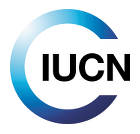Anthropogenic injury and site fidelity in Maldivian whale sharks (Rhincodon typus)
Keywords: anthropogenic injuries, whale shark, site fidelity
Abstract
Please click here:
- Whale sharks collect in predictable seasonal aggregations across the tropics. South Ari Atoll in the Maldives is one of a few aggregation sites where whale sharks can be encountered year-round. Here, areas with high levels of tourism-related boating traffic overlap with the whale shark hotspot, increasing the probability of anthropogenic injury. Whale sharks have been reported to remain faithful to this aggregation site following injury, despite the costs of injury and the risk of re-injury. However, the impacts of injury on site fidelity and residency behaviour are not fully understood.
- Encounter data on individual sharks from the Maldives Whale Shark Research Programme database (2006–2018) were analysed to assess the relationship between injury and site fidelity in whale sharks. There was no difference in geographic site use, with injured and non-injured individuals being encountered in the same areas. However, there were differences in residency timings: injured resident whale sharks (individuals repeatedly encountered over 6 months or longer) spent significantly more time at the atoll and less time absent, and were seen more consistently than non-injured residents. Increased residency duration, return rate and number of residency periods correlated with increasing injury number.
- These differences in behaviour imply a cost to injury, with whale sharks potentially remaining at this site to recover. With boat traffic being concentrated at the aggregation site, injured sharks may be more vulnerable to further injury. Alternatively, these individuals may remain at the atoll despite injury because the benefits gained from this area outweigh the potential costs, with more resident individuals facing greater exposure to anthropogenic threats. These findings highlight the importance of this location and emphasize the need for improved management of anthropogenic activities, particularly boating traffic, at aggregation hotspots to reduce injury rates and any subsequent impacts on behaviour and fitness.

